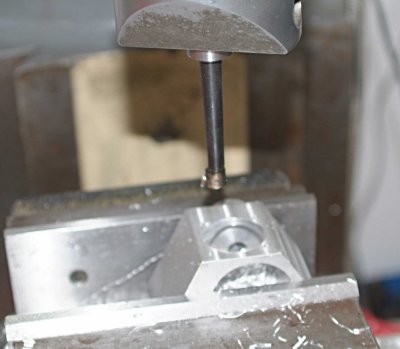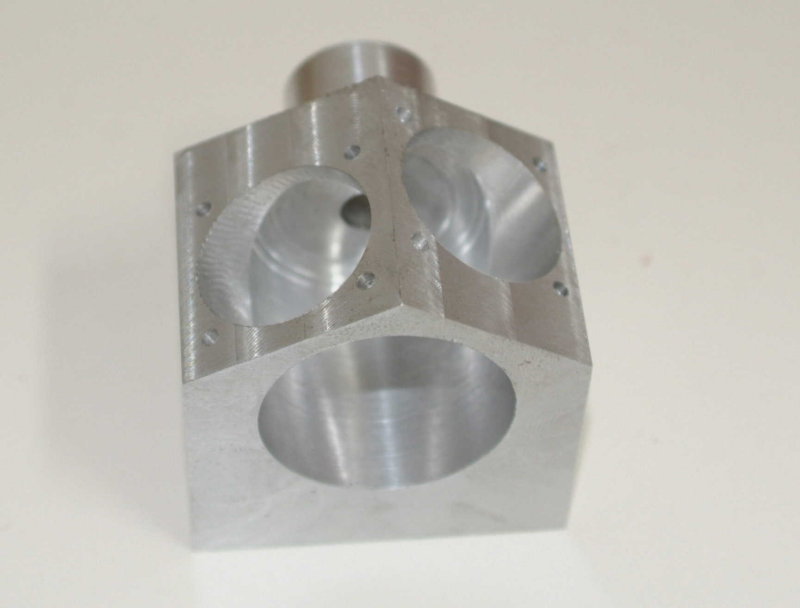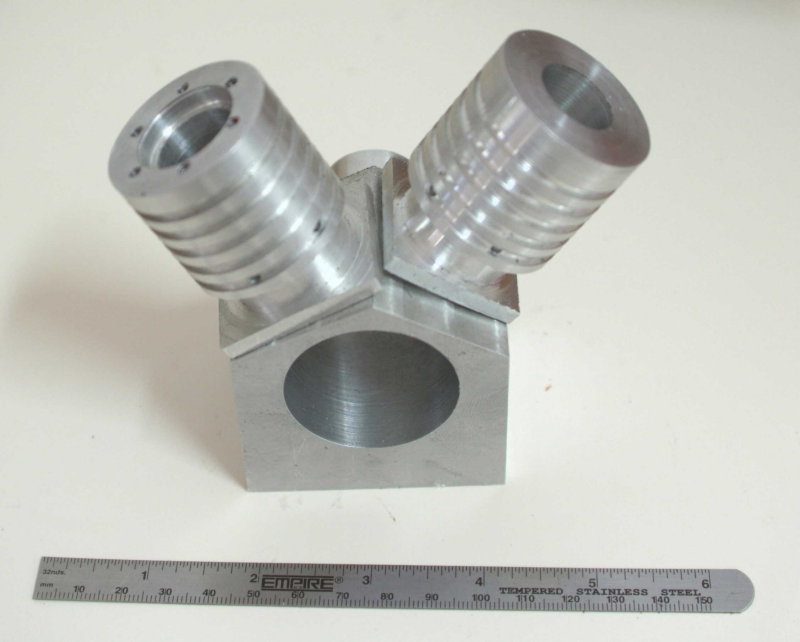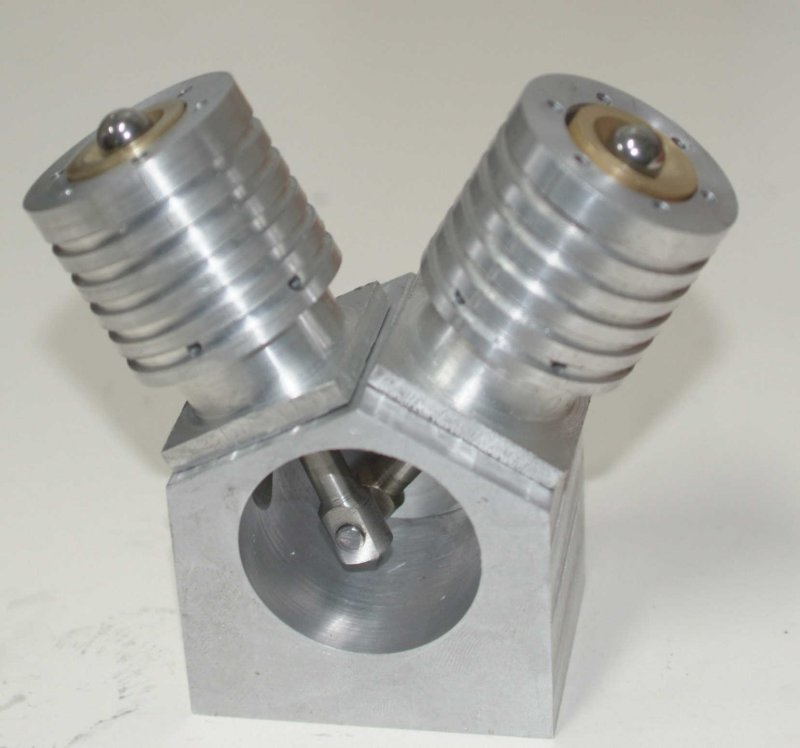- Joined
- Jun 4, 2008
- Messages
- 3,285
- Reaction score
- 630
My new boring bar came from Enco today, so I was able to make some progress, boring the holes in the crankcase for the cylinders:

In setting it up in the vise I found that one of the faces was off by a degree or so. I wonder if it slipped when milling the angle?? It's not too critical and probably not visible without close inspection, but irritating to me.
Here's the crankcase with both holes bored:

And with a preliminary test fit to get an idea of how it will look:


In setting it up in the vise I found that one of the faces was off by a degree or so. I wonder if it slipped when milling the angle?? It's not too critical and probably not visible without close inspection, but irritating to me.
Here's the crankcase with both holes bored:

And with a preliminary test fit to get an idea of how it will look:








